
BACK TO TOP
Seven Beautiful Indian Crafts You Can Embrace this Summer
Discover the rare and wonderful stories woven into the legacies of Gond art, Baluchari saree, Ajrakh, Longpi pottery and other art forms showcasing at SWADESH by Reliance Foundation| 28th Apr 2024
For as long as human civilization has existed, art has been its beating heart – fuelling creativity and imagination. This is especially true of India, a land where centuries of artistic legacies are interwoven across diverse landscapes and cultures.
SWADESH by Reliance Foundation is an India-inspired art and craft exposition that highlights this unique heritage with a shifting array of regional pavilions from different parts of the country. A reflection of Founder & Chairperson Mrs. Nita Ambani’s passion for the arts and her desire to promote and celebrate it, SWADESH offers an immersive cultural experience to visitors through enriching interactions with master artisans, and live demonstration of their artisanal products.
With dedicated pavilions sprawling across the Level 0 concourse area, this unique showcase has been part of the Cultural Centre since its opening. The pavilions, built to invoke the romance of the region they represent, have evolved through time to feature over 30 iconic Indian art forms so far. Many of the featured art forms including Pichwai, Sozni embroidery, and Blue Pottery have been supported by the Reliance Foundation, over the years.
As SWADESH turns over a new leaf again this summer, step into a vibrant cultural milieu with 7 new pavilions filled with handmade treasures and fascinating tales from eclectic Indian states. Here you’ll run into the evocative Gond art of Madhya Pradesh, radiant Baluchari sarees from West Bengal, ornate Guttapusalu jewellery, hand-painted Kalamkari art from Andhra Pradesh and Telangana, Gujarat’s Ajrakh elegance, the intricate beauty of Manipur’s Longpi pottery, and the majestic detailing of Kal Baffi carpets & Sozni embroidery from Kashmir.
Here’s a deep-dive into the newest curation of Indian art forms being showcased at SWADESH:
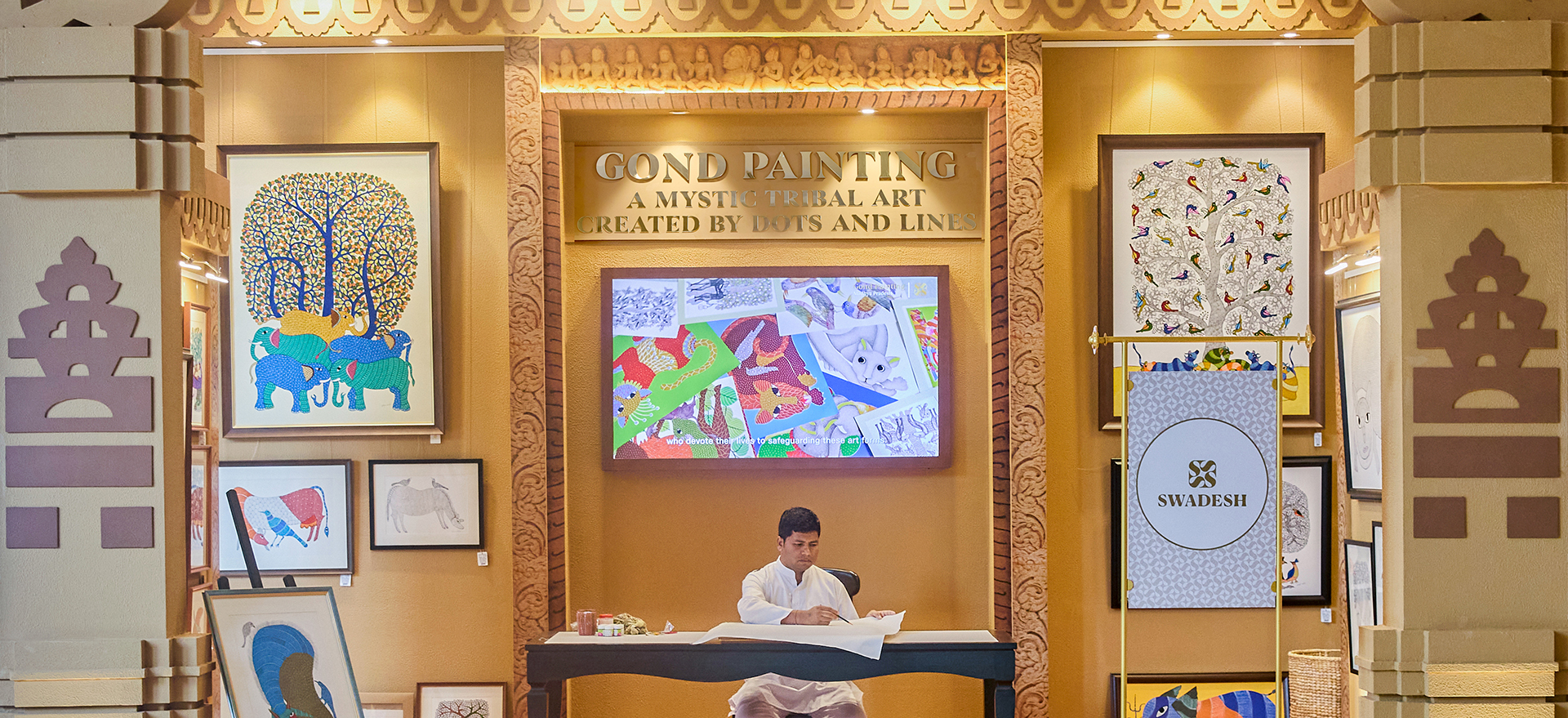
Gond Art (Madhya Pradesh)
A mix of bright colours and intricate patterns, this painting originated with the Gond tribe of central India. The Gond people are one of the largest indigenous communities in India, and their art is deeply rooted in cultural traditions and beliefs. Gond art depicts a range of subjects including mythological stories, folklore, and nature. They are created using a unique technique that involves the use of dot and line work to create highly detailed and complex designs.
Did You Know?
Traditionally, Gond paintings were made by women using natural materials such as charcoal, cow dung, and plant sap. Now it has evolved to include a variety of mediums including acrylic and water colour.
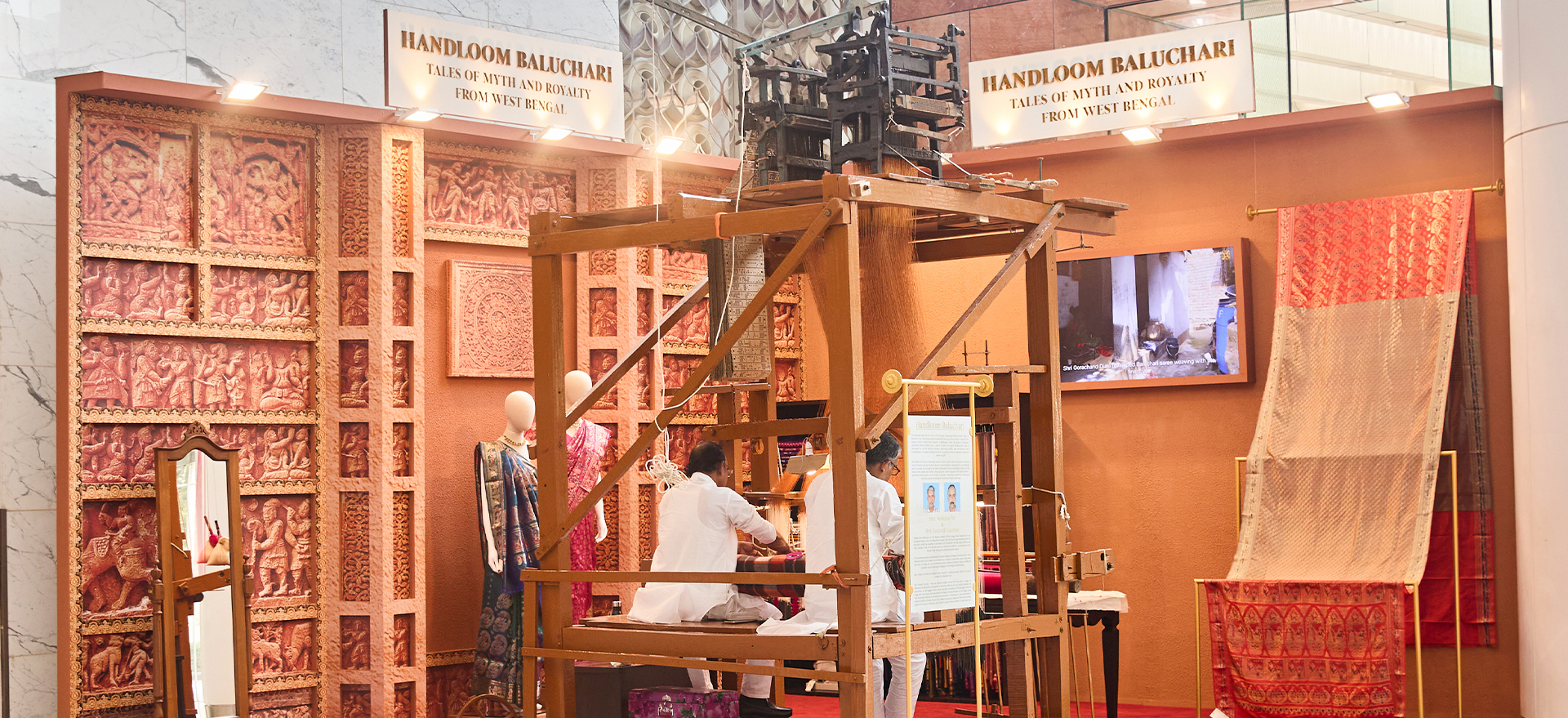
Baluchari Saree (West Bengal)
Born in the village of Baluchar in Bengal’s Murshidabad district some 500 years ago, this beautiful saree tells its own story – quite literally! A distinctive feature of Baluchari sarees is found in their coveted achal or end piece, which depicts tales from the Hindu mythology and ancient epics. Other times, they are adorned with brocaded human figures of nawabs or European characters – a regal nod to their era of origin. Baluchari saree, the production of which later moved to Bishnupur, is renowned for its silk brocade patterns, captivating motifs, and harmonious colour combinations.
Did you know?
The preferred palette for Baluchari includes various shades of red and maroon, besides other colours – and it is often said that a Bengali wedding is incomplete without the gifting of a Baluchari saree.
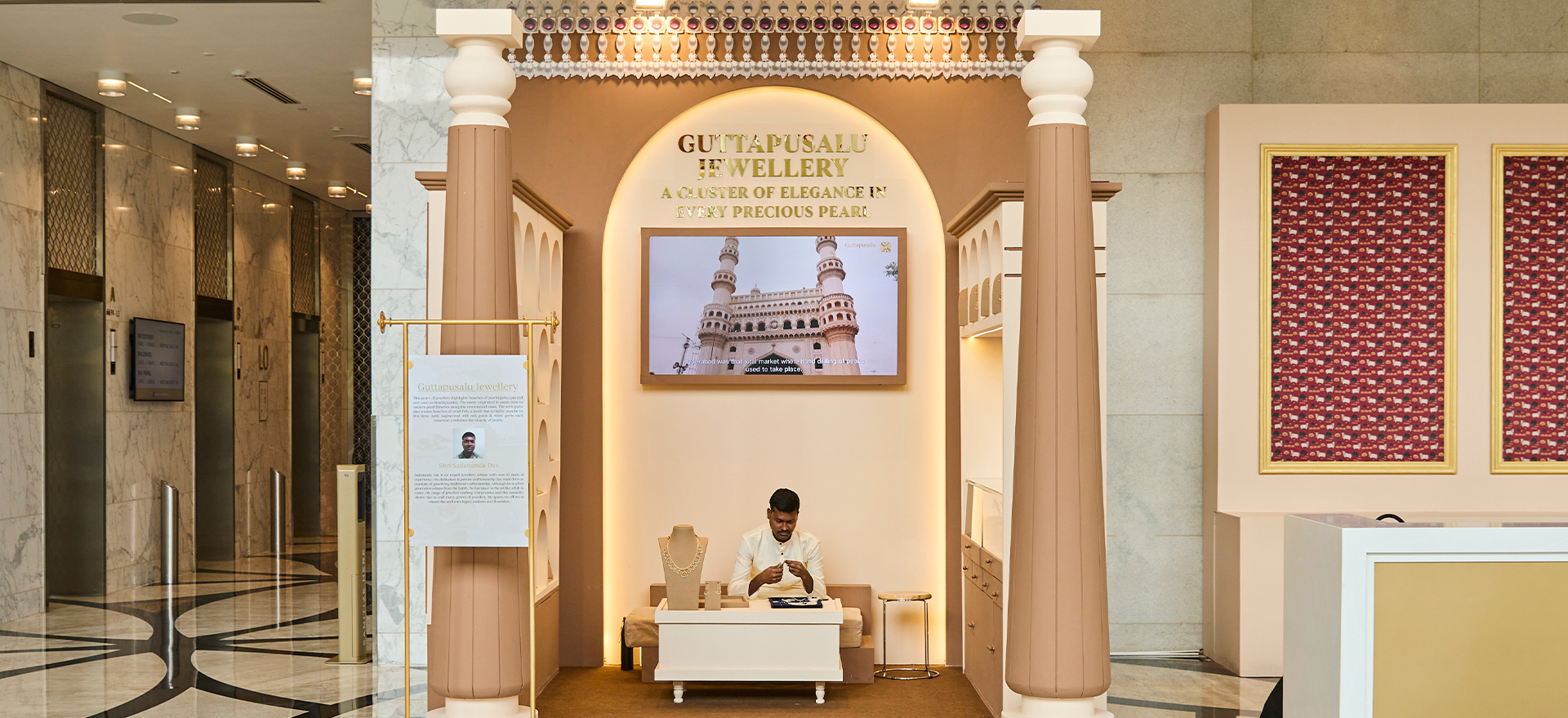
Guttapusalu Jewellery (Andhra Pradesh & Telengana)
Featuring bunches of pearls (gutta) strung together in a characteristic formation of beads (pusalu), this gorgeous make of jewellery from present-day Andhra Pradesh and Telengana celebrates the vivacity of pearls. Guttapusalu takes its name from the ancient pearl fisheries along the Coromandel coast. Augmented with red, green & white gems, these regal ornaments can elevate any outfit.
Did You Know?
The term ‘gutta’ also refers to a cluster of fish! Fringes of tiny pearls are stitched to resemble a swarm of fish. The popular pattern repeats itself in tiers in each exquisite piece.
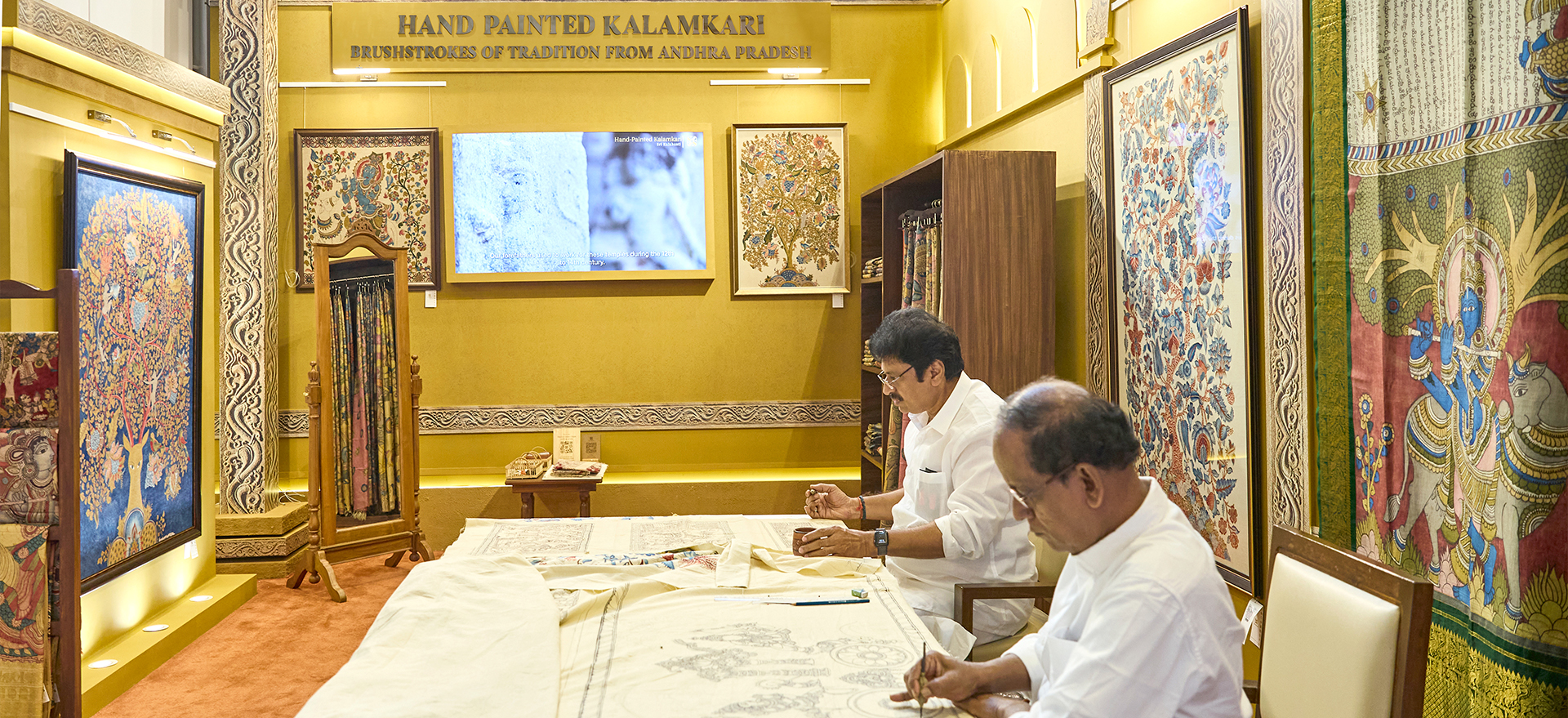
Srikalahasti Kalamkari (Andhra Pradesh & Telengana)
Indian summers are best spent in breezy cotton fabrics dipped in calm, earthy tones, and the beautiful craft of Kalamkari is a testament to that. Of the two distinct techniques of Kalamkari that exist in our country, Srikalahasti Kalamkari involves dyed hand-painting of the fabric. Made with great attention to detail in Srikalahasti of Andhra Pradesh’s Tirupati district, it uses two unique kinds of ‘kalam’, or pen – one for drawing and the other for painting. Nature is at the heart of the whole process, as pens carved out of bamboo reeds are used, along with floral and vegetable dyes. The ‘kalam’ used for painting has a rolled-up cloth attached to its sharpened end, acting as a filler. As paintings, Kalamkari art is often displayed as decorative backdrops in temples. As sarees, they are known for elegant borders and pallus.
Did You Know?
In Kalamkari, Gods are depicted in shades of blue, women in shades of yellow, and demons in red and green.
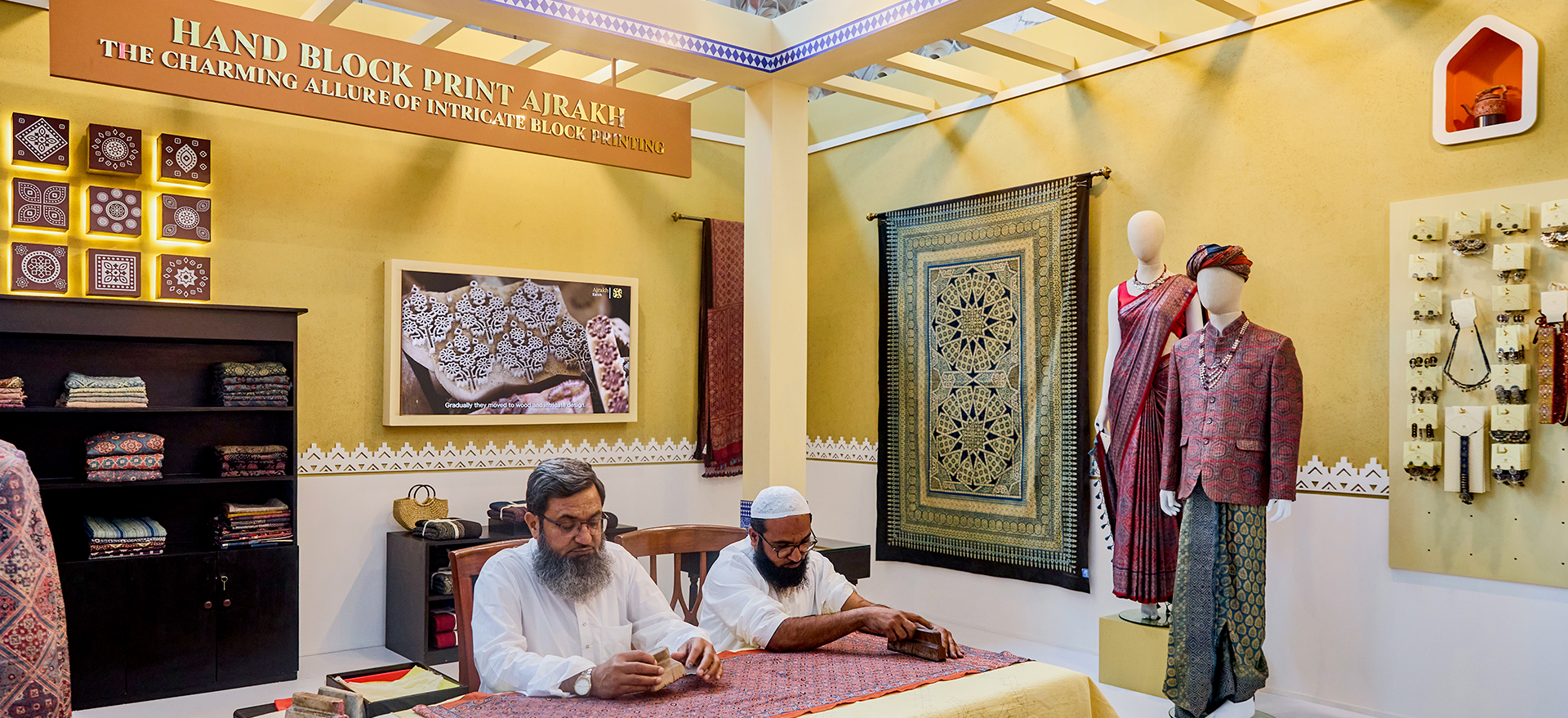
Hand Block Print Ajrakh (Gujarat)
Nothing says summer like a dash of cool blue, and Gujarat’s homegrown wonder Ajrakh (originating from ‘azrak’, meaning blue in Arabic) translates to exactly that. Created from a complex block-printing process accomplished with hand-carved wooden blocks, the legacy craft offers a rare visual treat of symmetrical patterns blooming against a vivid backdrop of crimson and indigo. With its history winding all the way back to the Indus Valley Civilization, Ajrakh is both inspired and executed by mother nature. This means that the craft that is the mainstay of the local ‘Khatri’ community uses natural dyes to depict stunning flora and fauna-inspired patterns, which then find their way into breezy summer ensembles!
Did You Know?
The Khatri community has kept the traditional craft of Ajrakh alive, which involves a complex 16 step process of washing, dyeing, and block-printing using natural dyes made from plants, roots, and minerals.

Longpi Pottery (Manipur)
Longpi pottery is an arduous pottery-making technique that originated in the Longpi village in Manipur, India. Also known as 'Longpi Hamlei' or 'stone pottery', it is made from a unique mixture of clay and stone. Longpi is created by mixing finely ground black serpentine stone with clay, which is then moulded by hand to create various shapes and forms. It is its ingredients that gives the handcrafted products their characteristic black tint. But what sets Longpi apart is its unique designs inspired by local trees and flowers, and created using techniques such as carving, etching, and polishing.
Did You Know?
One of the unique features of Longpi pottery is its ability to retain heat, making it ideal for use in cooking and serving food. The pottery is also non-toxic and eco-friendly, as it is made from natural materials and does not require any chemical glazes or finishes.
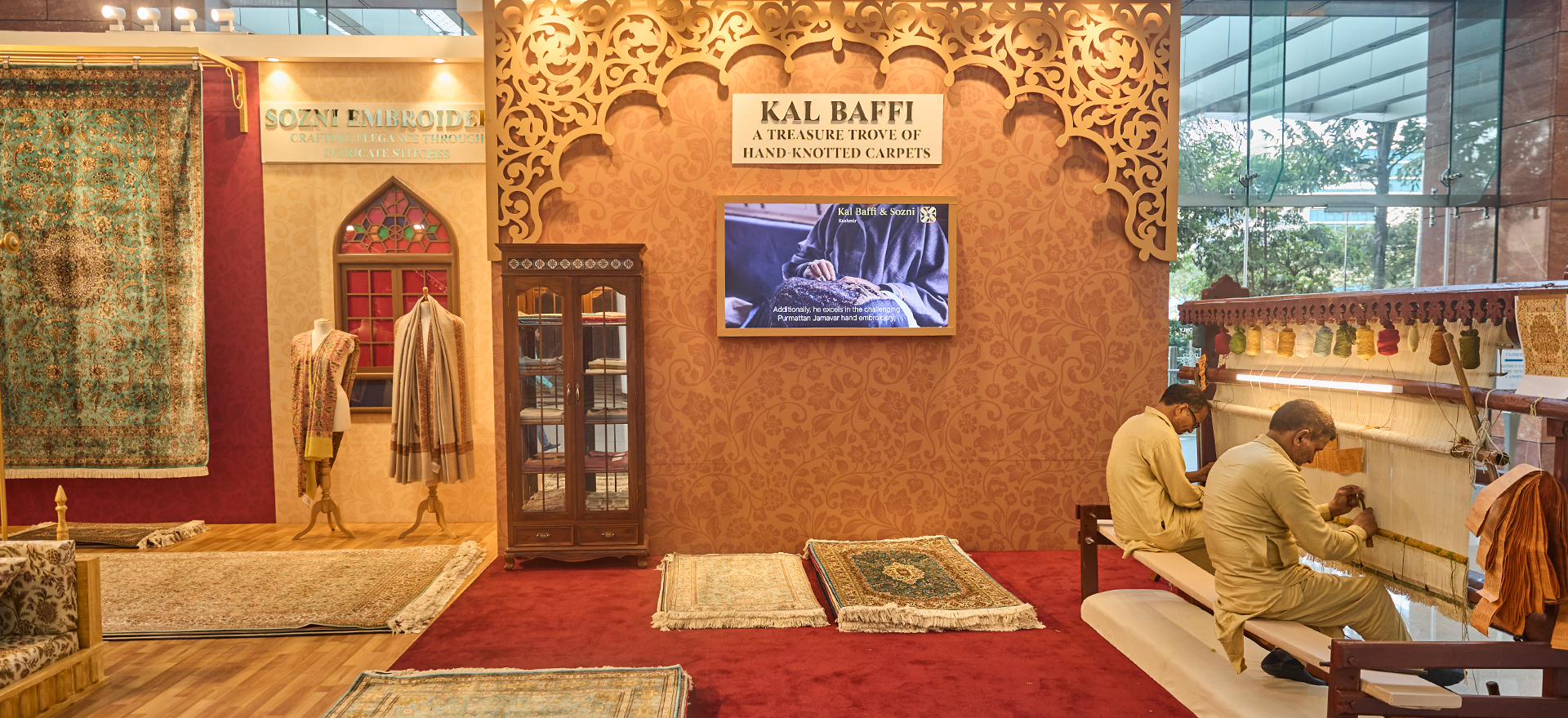
Kal Baffi & Sozni Embroidery (Kashmir)
The trademark crafts of Sozni and Kal Baffi, hailing from ‘Heaven on Earth’ Kashmir, are fittingly divine in their beauty and intricacy. Representing beauty, imagination, and almost superhuman precision, Sozni embroidery is all about delicate needlework. Its intricacy can vary from 5 stitches per cm to 500 stiches per centimetre and it uses different motifs such as floral, paisleys, abstract geometrical design – elements tying back to the valley’s immense natural and cultural heritage. Sozni is popular for its use in pashmina cashmere shawls and jackets.
Kashmir’s popular hand-knotted carpet, locally known as Kal Baffi, dates back to the 15th Century. These are crafted in marvellous designs, using warm colours and varied patterns predominantly inspired by classical Persian and Central-Asian rugs. The lush carpets come in both - wool and silk yarn - and are said to be among the finest in the world.
Did You Know?
Master artisans from the region have been practicing Sozni embroidery for generations and across centuries – for almost 500 years!
So bring your appetite for art and history when you stop by SWADESH this summer! Whether you intend to spend some time capturing the behind-the-scenes of master artisan’s immersed in their craft, wish to select a thoughtful gift for a loved one, or just fancy some holiday art gazing – you’ll head home with unforgettable stories… and perhaps some one-of-a-kind souvenirs.

